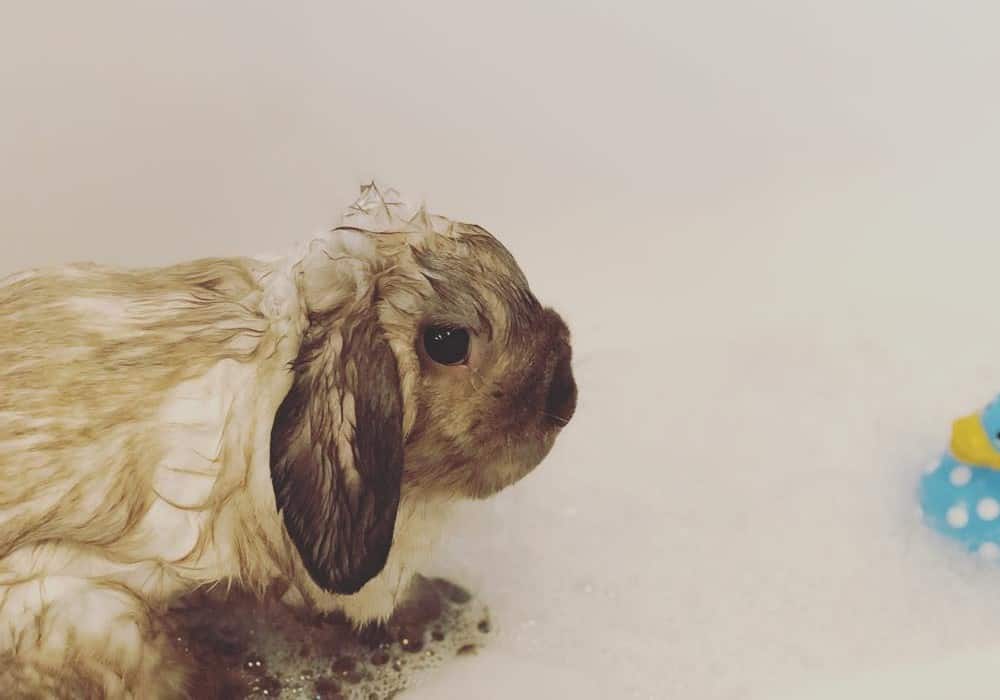Rabbits are popular pets for many reasons. They’re relatively low-maintenance, can be litter-trained, and are known for being affectionate and social creatures. However, before you bring a bunny home, it’s important to do your research to make sure you can provide the best possible care.
Rabbits are social creatures, so it’s important to spend time with them every day. This can include petting and playing, but also simply sitting quietly so they can get used to your presence.
Rabbits can make great pets, but they do require some care and attention. By doing your research and being prepared, you can provide a happy home for your new furry friend.
But how to bathe a rabbit at home? Let’s find out!
Do I Need to Bathe My Rabbit?
Rabbits are generally clean animals and do a good job of grooming themselves. However, there are times when a bath may be necessary. If your rabbit becomes dirty or smells bad, then a bath is in order. You should also consider giving your rabbit a bath if it has fleas.
Before giving your rabbit a bath, make sure to brush its fur to remove any knots or tangles. This will make the bath process much easier and prevent your rabbit from getting too stressed out.
Basic Recommendations for Rabbit Care
Rabbits are relatively easy to care for, but there are still some basic things you need to know to keep your rabbit healthy and happy.
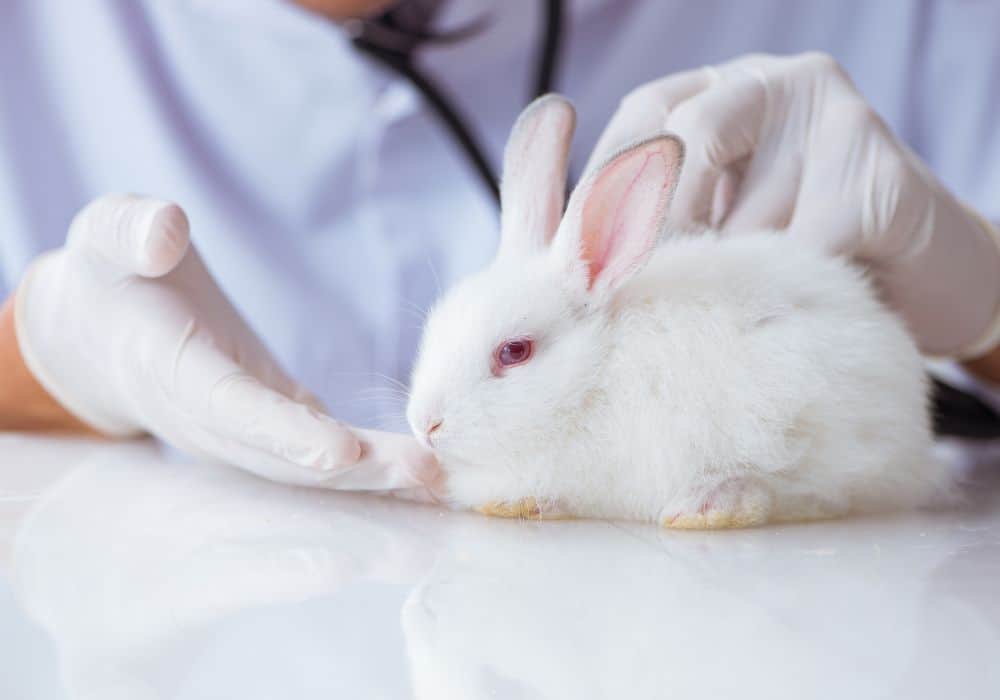 Ears
Ears
Rabbits have long, delicate ears that are very sensitive. They need to be cleaned regularly to prevent infection.
The best way to clean a rabbit’s ears is to use a cotton ball soaked in warm water. Gently wipe the inside of the ear, being careful not to go too deep. You should also wipe the outside of the ear.
If you notice any discharge, redness, or swelling, take your rabbit to the vet. Ear infections are common in rabbits, and they can be very painful.
Paws
Rabbits are known for their cute little paws, but did you know that those paws need special care? Here are a few tips on how to keep your rabbit’s paws healthy and happy:
- Inspect your rabbit’s paws regularly. Look for any cuts, scrapes, or other injuries. If you find anything, clean the area with warm water and a mild soap.
- Trim your rabbit’s nails regularly. Just like our own nails, rabbit nails can become overgrown and cause pain. Use a pet-safe nail trimmer to keep them at a comfortable length.
- Keep your rabbit’s paws clean and dry. Like any other part of their body, rabbits’ paws can get dirty. Be sure to wipe them down after they’ve been outside, and give them a good cleaning every week or so.
- Moisturize your rabbit’s paws. Just like our skin, rabbit paw pads can become dry and cracked. Use a pet-safe moisturizer to keep them soft and healthy.
Eyes
Rabbits are unique creatures with special care requirements. Their eyes are no exception. Here are a few tips on how to keep your rabbit’s eyes healthy and bright:
- Keep your rabbit’s cage clean. A clean environment will help prevent eye infections.
- Provide your rabbit with plenty of fresh hay and water. A healthy diet will help keep your rabbit’s eyes bright and clear.
- Inspect your rabbit’s eyes regularly. Look for any redness, discharge, or other abnormalities. If you notice anything unusual, contact your veterinarian.
Teeth
Caring for your rabbit’s teeth is an important part of keeping your bunny healthy. Rabbits have very different dental needs than other pets, so it’s important to understand how to properly care for your rabbit’s teeth.
Rabbits have two sets of teeth: their incisors (front teeth) and their molars (back teeth). Rabbits use their incisors to nibble on food and their molars to grind food up. Both sets of teeth grow continuously throughout a rabbit’s life.
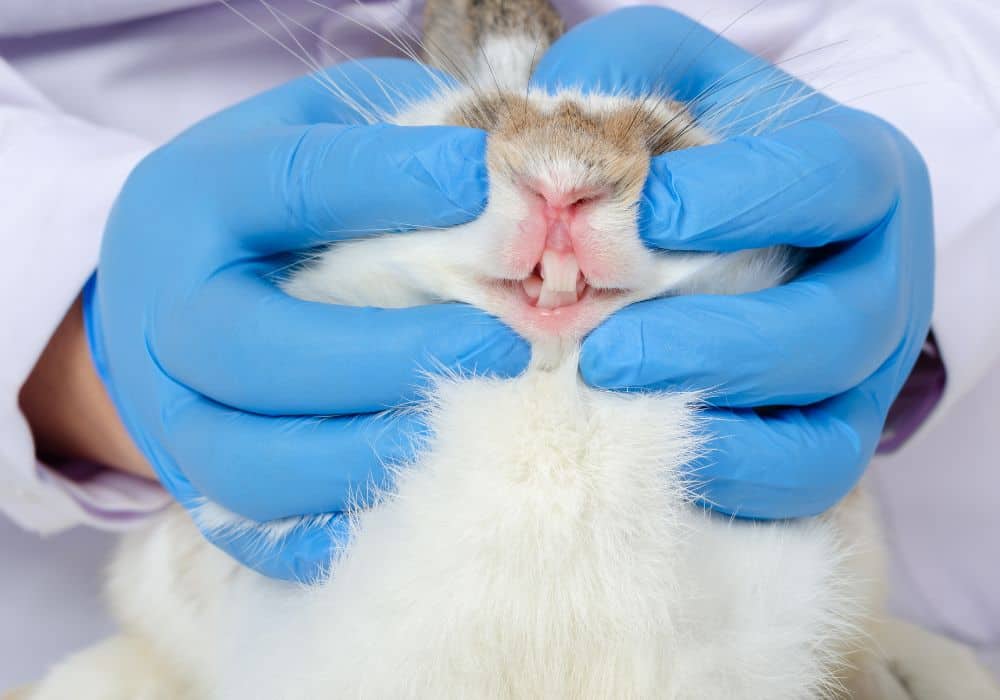
Rabbits’ teeth are designed to wear down as they chew. This natural wear and tear helps keep a rabbit’s teeth at a healthy length. However, sometimes a rabbit’s teeth can grow too long. When this happens, it is called malocclusion. Malocclusion can cause a number of problems, including pain, difficulty eating, and even tooth loss.
If you think your rabbit may have malocclusion, take them to the vet for an evaluation. Your vet will be able to tell if your rabbit’s teeth need to be trimmed or if there is another underlying problem.
In addition to malocclusion, rabbits can also develop other dental problems, such as tooth decay, gum disease, and abscesses. These problems are often caused by a lack of proper dental care.
To help prevent dental problems in your rabbit, it is important to do the following:
- Feed your rabbit a diet that is high in fiber. A diet that is high in fiber will help keep your rabbit’s teeth clean and healthy. The best way to ensure your rabbit is getting enough fiber is to feed them hay. Hay should make up the majority of your rabbit’s diet.
- Provide your rabbit with plenty of chew toys. Chew toys will help keep your rabbit’s teeth at a healthy length and can also help prevent boredom.
- Brush your rabbit’s teeth regularly. You can use a soft-bristled toothbrush or a piece of gauze to gently brush your rabbit’s teeth. Be sure to use toothpaste made specifically for rabbits.
- Take your rabbit to the vet for regular dental check-ups. Your vet will be able to spot any potential problems and provide you with guidance on how to best care for your rabbit’s teeth.
Bathing
Rabbits are animals that groom themselves regularly. They do not need baths from their owners unless they get dirty from something like rolling in the mud.
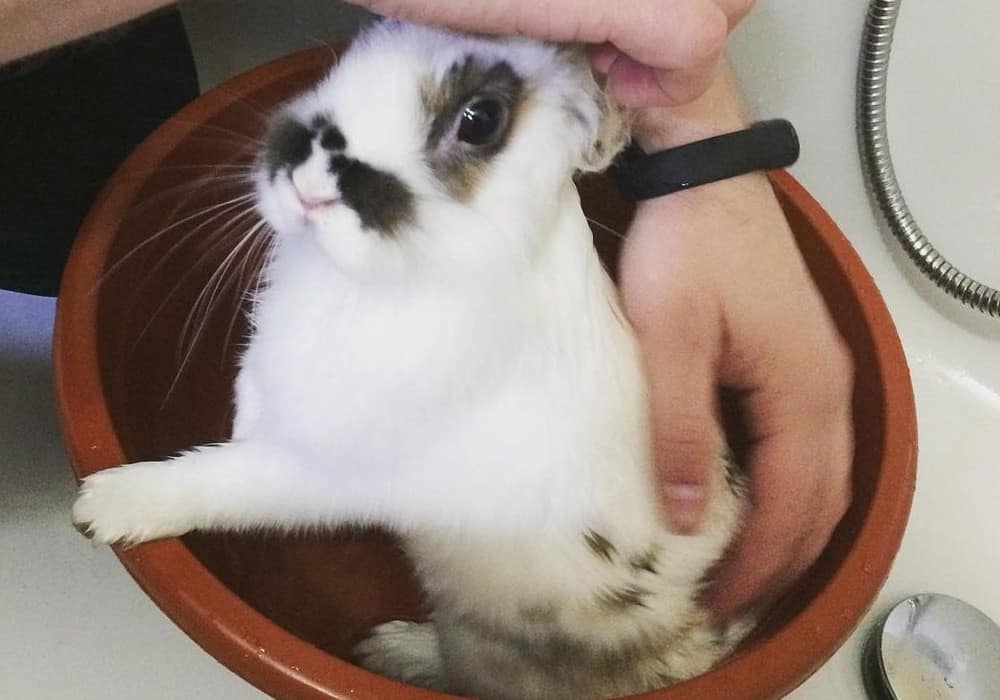
All About Bathing Rabbits
If your rabbit has been outside and gotten dirty, if he has an injury that needs to be cleaned, or if he has a medical condition that requires regular bathing, you will need to know how to safely bathe a rabbit. Follow these steps to give your rabbit a bath:
- Fill a sink or bathtub with warm water. The water should be deep enough to reach your rabbit’s shoulders.
- Place your rabbit in the water and gently wet his fur. Be careful not to get water in his eyes, nose, or mouth.
- Apply a small amount of mild shampoo to your rabbit’s fur and work it in with your fingers.
- Rinse your rabbit’s fur thoroughly with clean, warm water.
- Gently remove your rabbit from the water and place him on a towel. Pat his fur dry.
- Once your rabbit is dry, you can brush his fur to help remove any tangles.
Giving your rabbit a bath can be a stressful experience for both you and your rabbit. However, if you take your time and follow these steps, it will be a much smoother process.
What Is a Proper Bathing of Rabbits and the Main Stages
When it comes time to give your rabbit a bath, there are a few things you need to keep in mind.
First, rabbits are very sensitive to temperature changes. Make sure the room you are bathing them in is not too cold or too hot. The water should also not be too hot or too cold. You can test the water temperature with your hand before adding your rabbit.
Second, do not use soap on your rabbit. Soap is harsh and can strip the natural oils from their fur, leaving them vulnerable to skin infections.
Third, take your time. Rabbits do not like being wet and will likely struggle to get away from you. Be patient and gentle, and make sure to rinse all of the shampoo out of their fur.
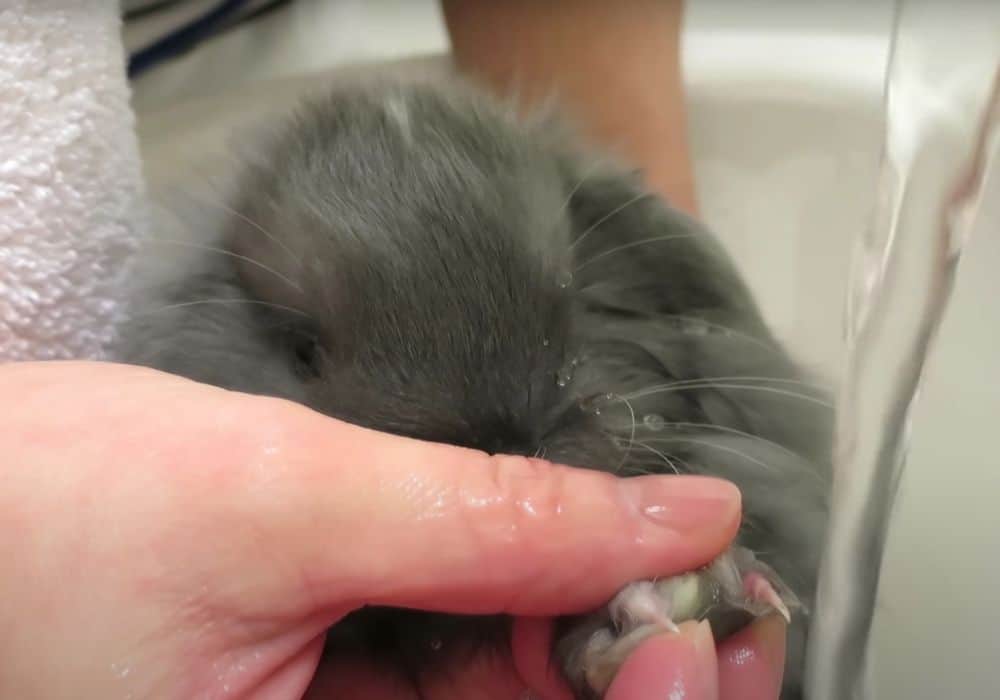
What Is a Dry Bath for Rabbits and How to Bathe Them Properly
A dry bath is a process of bathing a rabbit without using any water. The rabbit is placed in a tub or container that is filled with a dry bath product, such as a powder or cornstarch. The rabbit is then rubbed all over with the dry bath product, which absorbs any dirt, dust, or oils on the rabbit’s fur. The rabbit is then brushed to remove any excess dry bath product.
Dry baths are a quick and easy way to clean a rabbit, and they can be done as often as needed. However, rabbits should not be given a dry bath more than once a week, as it can dry out their skin and fur. When giving a rabbit a dry bath, be sure to avoid getting any product in their eyes, nose, or mouth.
What Is Superficial Care for Rabbits
Rabbits are often thought of as low-maintenance pets, but they still require some basic grooming to keep them healthy and looking their best. Here are some tips on how to care for your rabbit’s paws, tail, and ears:
Paws: rabbits have delicate paws that can easily become injured or infected. Inspect your rabbit’s paws regularly and clean them if they become dirty.
Tail: rabbits use their tails to communicate, so it’s important to keep the area clean and free of any dirt or debris. You can use a soft cloth or cotton ball dipped in warm water to gently clean the tail.
Ears: rabbits have very sensitive ears that can easily become damaged. Inspect your rabbit’s ears regularly and clean them if they become dirty.
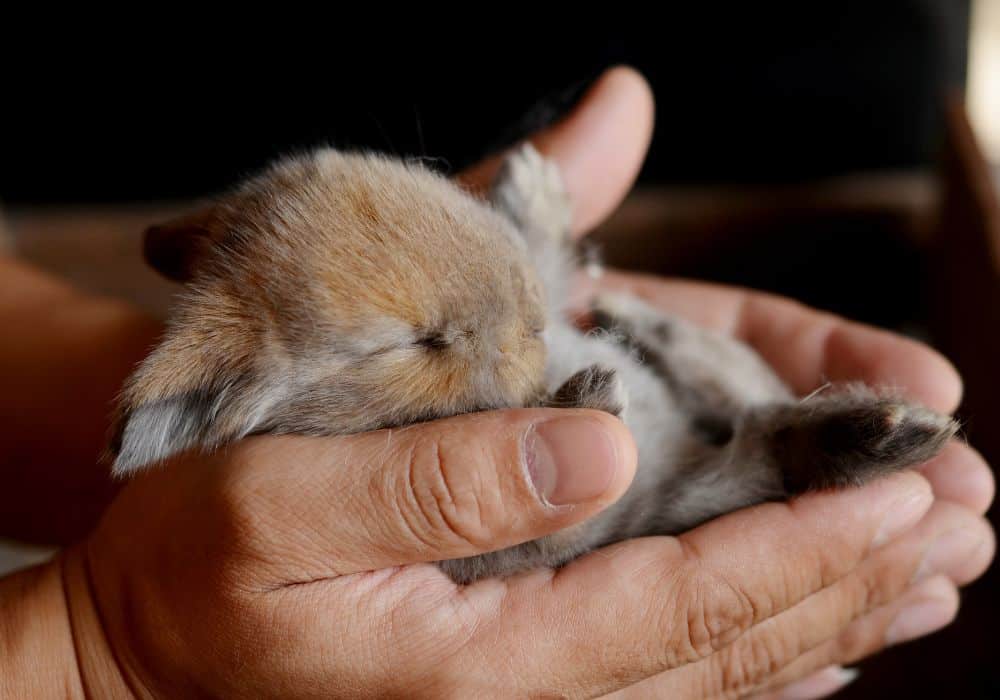
Where Is the Best Place to Bathe a Rabbit?
The best place to bathe a rabbit is in a sink or a bathtub. Fill the sink or tub with a few inches of lukewarm water, and place the rabbit in the water. Use a cup or pitcher to pour water over the rabbit, and use a washcloth to gently scrub the rabbit’s fur.
Can I Use Shampoos or Other Cosmetics to Wash My Rabbit?
Rabbits are one of the cleanest animals and they groom themselves regularly. However, they still need our help to stay clean and healthy. The best way to wash a rabbit is to use a pet-safe shampoo and conditioner. Avoid using human shampoo and conditioner as they can be too harsh for a rabbit’s delicate skin.
Shampoos
Rabbit shampoos are specially formulated to be gentle on a rabbit’s delicate fur and skin. They are usually milder than shampoos made for other animals, and they often have a light, pleasant scent. Many rabbit owners use these shampoos on a regular basis to help keep their rabbits clean and healthy.
There are a few things to keep in mind when using any type of shampoo on a rabbit. First, avoid getting any water or shampoo in the rabbit’s eyes, nose, or mouth. Second, take care to rinse the rabbit thoroughly to remove all traces of the shampoo.
Rabbit shampoos are generally very safe and gentle, but it’s always a good idea to consult with your veterinarian before using any new product on your rabbit.
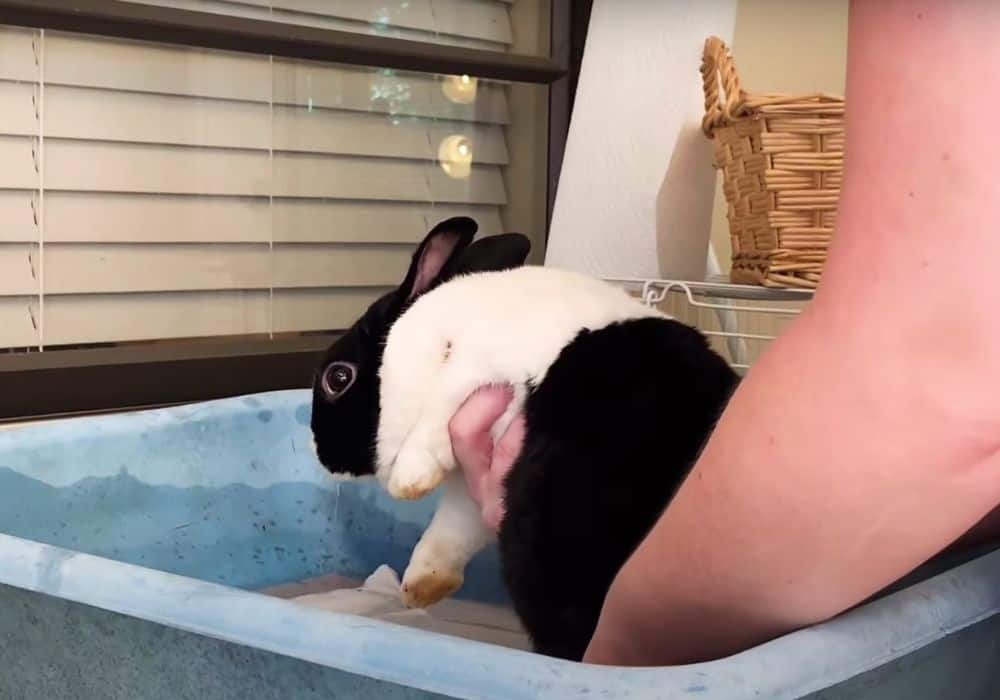
Dry Powders
Rabbit dry powders are a type of powder that is used to help keep rabbits clean and dry. They are made from a variety of materials, including cornstarch, talc, and kaolin. Rabbit dry powders can be found in pet stores and online.
Use of Baby Corn Starch
If you have a pet rabbit, you may be looking for a safe, natural way to keep them clean and smelling fresh. Baby cornstarch is a gentle, non-toxic powder that can be used for this purpose.
When applied to your rabbit’s fur, the cornstarch will absorb any oils and dirt. It can also help to deodorize your pet if they have a strong smell. To use, simply sprinkle a small amount of baby cornstarch onto your rabbit’s fur and rub it in.
How to Care For Your Rabbit After Bathing
Rabbits are generally clean animals and don’t require baths very often. In fact, bathing a rabbit too often can actually be harmful to their health. However, there are times when a bath is necessary, such as if your rabbit has become dirty or smells bad. When this is the case, it’s important to know how to properly care for a rabbit after bathing.
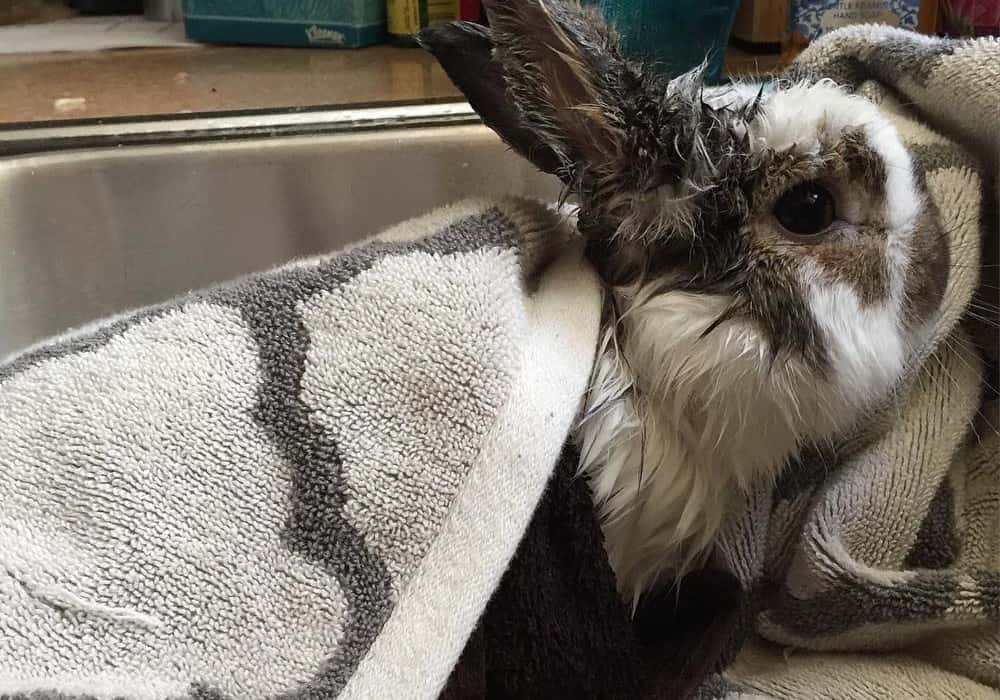
Dry Properly
It is important to properly dry a rabbit after bathing to avoid health issues. Wet rabbits are susceptible to colds and other respiratory problems. Here are some tips on how to properly dry a rabbit after bathing:
- Use a clean, soft towel to gently pat the rabbit dry.
- Avoid using a blow dryer as this can be too harsh for the rabbit’s skin.
- Place the rabbit in a warm, dry location such as a sunny spot or near a heater.
- Give the rabbit plenty of time to fully dry off before placing them back in their cage or hutch.
Brushing the Coat
Brushing a rabbit’s fur after bathing is important to help remove any mats or tangles that may have formed. It is also a good way to help distribute the natural oils in their fur.
Start by gently brushing the fur on their back and sides. Be careful not to pull on any mats or tangles. Once you have brushed their back and sides, you can move on to their head.
If your rabbit has any mats or tangles, you can try to gently remove them with your fingers or with a comb. If you are having trouble removing a mat, you can try using a detangling spray. If the mat is still not coming out, you may need to take your rabbit to a groomer or vet to have it removed.
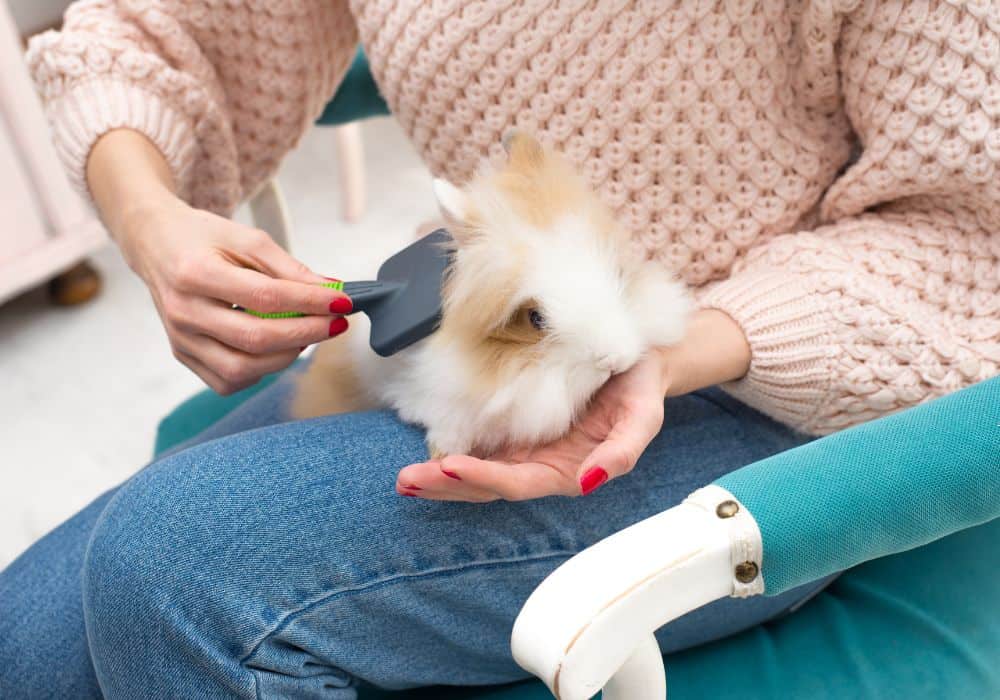
Which Brush to Use
There are a few different types of brushes that can be used on a rabbit after a bath. The type of brush you use will depend on the type of rabbit you have.
If you have a short-haired rabbit, you can use a soft-bristled brush. If you have a long-haired rabbit, you will need to use a comb to avoid mats and tangles.
You will also need to use a different brush if your rabbit has sensitive skin. In this case, you should use a hypoallergenic brush.
What to Brush With And Whether It Is Necessary
Just like humans, rabbits can get cavities and other dental problems if their teeth aren’t properly cared for. But unlike humans, rabbits can’t tell us when their teeth hurt. So it’s up to us to make sure their teeth stay healthy.
The good news is that rabbits’ teeth are relatively easy to care for. A diet of hay, fresh vegetables, and a small amount of pellets helps keep their teeth clean and healthy. But you still need to brush their teeth to remove any plaque and tartar that can build up.
There are specially-made toothbrushes and toothpastes for rabbits. Gently brush their teeth a few times a week, and they’ll stay healthy and happy.
Cut the Hair
Rabbits are known for their soft, fluffy fur, which can be a source of comfort for them and their owners alike. However, that fur can also become matted and tangled, particularly if the rabbit isn’t groomed on a regular basis. In such cases, shearing the rabbit’s fur may be necessary in order to keep the animal comfortable and healthy.
The process of shearing a rabbit’s fur is not difficult, but it does require some care and attention. First, the rabbit should be brushed thoroughly to remove any loose or tangled fur. Next, the area to be sheared should be marked off with a comb or scissors, taking care not to cut too close to the skin. Finally, the fur should be cut evenly with a sharp pair of scissors, taking care not to pull or nick the skin. You can also turn to a professional groomer.
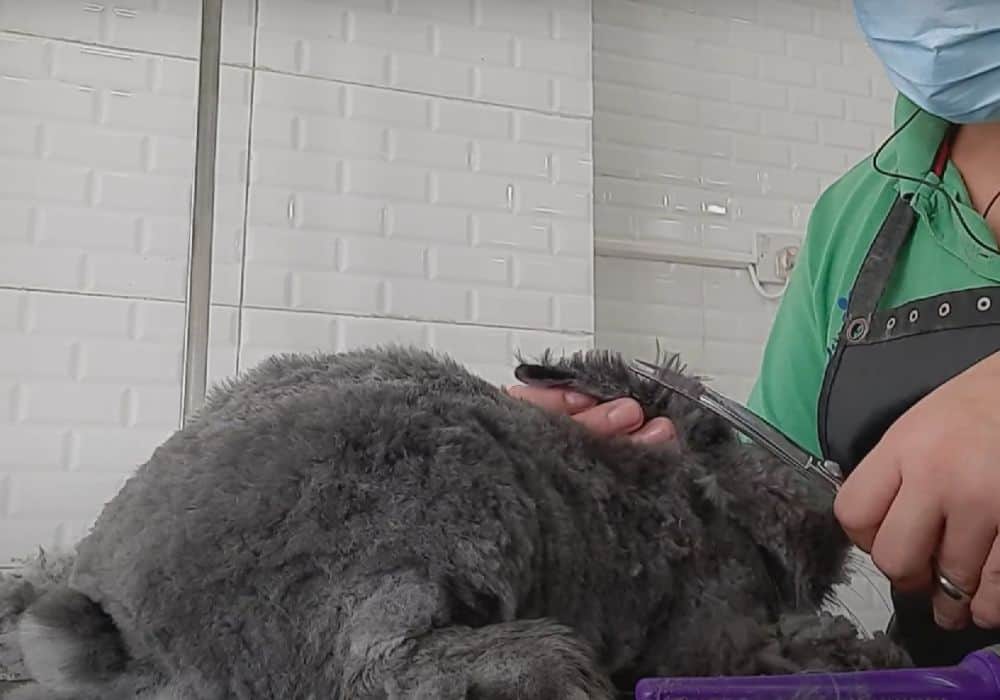
Reward for the Rabbit
Rabbits are often afraid of baths, but with a little encouragement they can learn to enjoy them! Here are a few things you can do to help your rabbit feel more comfortable during and after their bath:
- Talk to your rabbit in a calm, reassuring voice throughout the bath.
- Offer them treats to eat while they are in the bath.
- Gently rub their head and back while they are wet to help them dry off.
- Give them plenty of time to rest after the bath. Offer them a cozy blanket to snuggle up in, and make sure they have access to food and water.
FAQ
How to Wash Rabbits Butt?
There are a few ways that you can wash your rabbit’s butt. The most common way is to use a baby wipe or a soft cloth dampened with warm water. You can also use a cotton ball or Q-tip to gently wipe the area.
How to Bathe a Rabbit From Fleas?
So, how to bathe a rabbit with fleas? To bathe a rabbit from fleas, begin by using a flea comb to remove any fleas from the rabbit’s fur. Next, wet the rabbit’s fur with warm water and shampoo the rabbit using a mild shampoo. Rinse the rabbit thoroughly and dry its fur using a towel.
How Often Do You Need to Bathe a Rabbit?
The frequency of bathing a rabbit will depend on the individual rabbit and their needs. Some rabbits enjoy bathing and will request it often, while others may never need a bath.
Are Baths Harmful to Rabbits?
There is no scientific evidence that baths are harmful to rabbits. In fact, many rabbits enjoy taking baths and see them as a fun and relaxing activity. However, it is important to make sure that your rabbit is comfortable with taking a bath and that you do not force them to do so. If your rabbit does not seem to enjoy taking baths, it is best to avoid giving them one.
How to Bathe Rabbits Safely?
Rabbits should be bathed only when necessary, as they do not like getting wet. When they must be bathed, rabbits should be placed in a sink or tub filled with a few inches of warm water. They should be bathed quickly and thoroughly, using a mild shampoo designed for rabbits. After the bath, rabbits should be dried with a towel and placed in a warm, draft-free area to prevent them from getting chilled.
How to Bathe a Lionhead Rabbit?
To bathe a lionhead rabbit, you will need to use a mild shampoo and warm water. Let the rabbit soak in the water for a few minutes before rinsing. Be sure to dry the rabbit thoroughly afterwards.
What Do You Call a Rabbit With Fleas?
There is no definitive answer to this question as people may come up with different ways to describe a rabbit with fleas. Some possible options include “a flea-infested rabbit,” “a rabbit with a flea problem,” or simply “a rabbit with fleas.”
Conclusion
Overall, rabbits are clean animals and love to groom themselves. However, they also enjoy a good bath now and then. Bathing a rabbit is not difficult, but there are a few things you should keep in mind to make the experience as enjoyable as possible for both you and your furry friend.
References:
- Fleas (Ohio State University): https://ohioline.osu.edu/factsheet/HYG-2081-11
- Inflammation of the Middle and Inner Ear in Rabbits (PetMD): https://www.petmd.com/rabbit/conditions/ears/c_rb_otitis_media_interna
- Dental Disease in Rabbits (VCA Animal Hospitals): https://vcahospitals.com/know-your-pet/dental-disease-in-rabbits
Also read:
- Discover the Amazing World of 10 Day Old Bunnies: All About Rabbits!
- Discover All About the Characteristics of a 1 Year Old Rabbit
- Why Doesn’t My Rabbit Like Me? – Understanding Rabbit Behavior for All About Rabbits
- Everything You Need to Know About Bunny Grinding Teeth in Rabbits
- How Eating Poop is Part of a Normal Rabbit Diet – All About Rabbits
